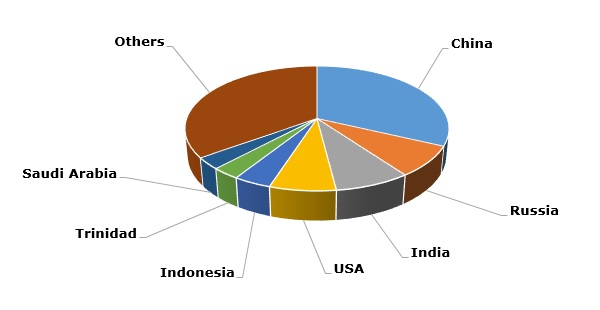Ammonia is one of the most important building blocks of the chemical industry. It is also indispensable in the production of liquid nitric fertilizers such as ammonium nitrate, urea, DAP/MAP or aqua ammonia. As a commercial product and important chemical intermediate, it is manufactured in a wide range of countries and by multiple companies.
Ammonia: structure of the global production by country (2016)

Such significant geographic sprawl and varied manufacturing base, paralleled by the interplay of different factors, creates a complex dynamic picture of the ammonia market. This picture is characterised by severe competition, big regional variability, large market volatility, turbulent price fluctuations, dominance of ammonia domestic consumption over import-export activities and susceptibility to a roster of market enablers and inhibitors.
The prevailing current trend in the ammonia market is excessive supply, followed by price decreases and reduced producers’ margins. This became evident in the first half of 2017 with a strong potential of roll-over in the second half of the year. The oversupply was driven by large ammonia capacity expansions. Acron launched a new 700,000 mt/y ammonia unit, one of the largest in the CIS, in Veliky Novgorod in 2016. In 2016, CF Industries announced the start-up of a new ammonia plant at the Donaldsonville nitrogen complex, while in 2017 CF Industries commissioned a new ammonia and urea plant at the company’s Port Neal nitrogen complex in Iowa. Recent projects include Ma’aden Wa’ad Al-Shamal Phosphate Company’s (MWSPC) Umm Wu’al Phosphate mega-project in Saudi Arabia (August 2017 by Fluor Corporation, as well as the ammonia production facility at Cherepovets, Russia (August 2017 by Phosagro), to name only a few. These increases definitely assisted to raising ammonia supply and led to price decreases in various regions. However, the volatile nature of the ammonia market can easily unfold a reverse trend if ammonia supply deteriorate or other factors intervene.
More information on the ammonia market can be found in the in-demand research publication “Ammonia: 2017 World Market Outlook and Forecast up to 2021”.
